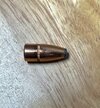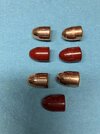SingleActionAndrew
Member
- Joined
- May 28, 2021
- Messages
- 297
9mm I believe is a unique case here where it's slightly tapered and IIRC the Lee ring is too
I also suspect if you had a handful of FCDs the results would vary. I don't have the specifics at hand but folks have posted here and other forums responses from Lee on what they consider acceptable tolerance/variation in their dies
I know one gentleman who makes 32s&w long match ammo and he mentioned buying a handful of Lee sizers to find just one that wasn't undersized
I also suspect if you had a handful of FCDs the results would vary. I don't have the specifics at hand but folks have posted here and other forums responses from Lee on what they consider acceptable tolerance/variation in their dies
I know one gentleman who makes 32s&w long match ammo and he mentioned buying a handful of Lee sizers to find just one that wasn't undersized




